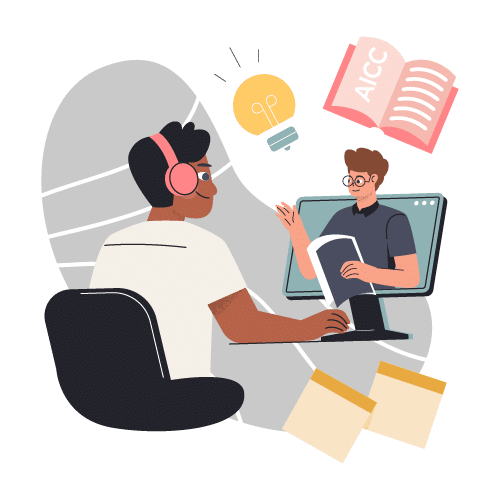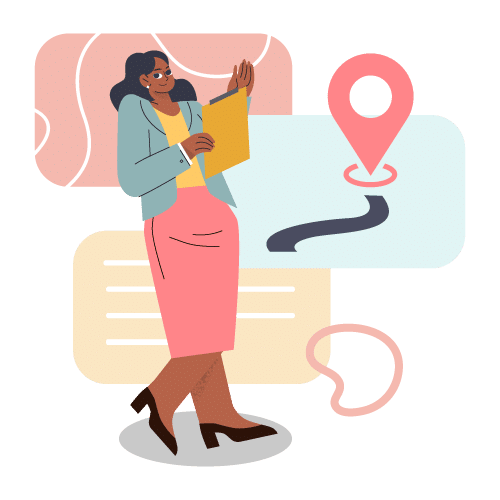In the world of eLearning, the quest for engaging and interactive content often takes center stage. Learners benefit from immersive experiences, interactive modules, and simulations that promote active participation and deep learning. However, this drive for interactivity can sometimes clash with the equally important goal of accessibility, especially in the context of 508/WCAG compliance for learners with disabilities. Achieving the right balance between interactivity and accessibility in eLearning is a challenge that instructional designers and organizations face.
The interactivity imperative
Interactivity is a cornerstone of effective eLearning. It transforms passive learners into active participants, creating an engaging and immersive learning experience. Here’s why interactivity is crucial:
- Engagement—Engaging learners is one of the foremost goals of eLearning. Interactivity keeps learners involved, piquing their interest and ensuring they remain focused on the content.
- Retention—Interactive elements, such as quizzes, games, and simulations, enhance information retention. Learners are more likely to remember what they learned through hands-on experiences.
- Application—Interactivity promotes the application of knowledge. It allows learners to practice and apply new skills and information in a controlled, risk-free environment.
- Personalization—Interactive eLearning can be customized to suit individual learner needs and preferences, enhancing the overall learning experience.
The accessibility imperative
Accessibility is the principle of ensuring that all learners, regardless of ability, have equal access to the content. This is essential for both ethical and legal reasons, especially in the context of Section 508 of the Rehabilitation Act of 1973 in the United States. Here’s why accessibility is crucial:
- Inclusivity—Accessibility ensures that learners with disabilities can participate fully in eLearning programs. This inclusivity aligns with the principles of diversity and equity.
- Legal compliance—For organizations that receive federal funding or are contracted by the U.S. government, Section 508 compliance is not optional. Failure to comply can result in legal repercussions.
- Market expansion—By making eLearning content accessible, organizations can reach a broader audience.
- Reputation—Being known for accessible eLearning content enhances an organization’s reputation as a socially responsible and inclusive entity.
The tradeoffs
The tradeoffs between interactivity and accessibility in eLearning arise from the inherent conflict between engaging, immersive content and the need to provide equal access to learners with disabilities. Here are some common tradeoffs:
- Multimedia—Interactive eLearning often involves multimedia elements such as videos, audio, and animations. These can be problematic for learners with visual or hearing impairments.
- Navigation—Complex interactive elements can create navigation challenges for learners who use assistive technologies such as screen readers.
- Timing—Some interactive elements, such as quizzes or timed exercises, may not provide learners with sufficient time to respond, which can be a significant hurdle for those with cognitive disabilities.
- Compatibility—Not all eLearning platforms, tools, or content formats are compatible with assistive technologies, limiting the accessibility of the content.
- Customization—Highly interactive content may be less customizable to accommodate individual learner needs, potentially excluding those with specific accessibility requirements.
Solutions for balancing interactivity and accessibility
Striking the right balance between interactivity and accessibility in eLearning requires careful planning, thoughtful design, and a commitment to providing equivalent facilitation for all learners. Here are some solutions to help achieve that balance:
1. Universal Design for Learning (UDL)
UDL is a framework that promotes designing learning environments that are accessible to all. By proactively considering accessibility during the design phase, instructional designers can minimize tradeoffs between interactivity and accessibility.
2. Alternative Formats
Provide alternative formats for multimedia content. Offer transcripts for audio and video, and use closed captions and subtitles. This ensures that learners with disabilities can access the same content through alternative means.
3. Keyboard accessibility
Ensure that all interactive elements can be navigated using a keyboard. This is essential for learners who rely on keyboard navigation or screen readers.
4. Time extensions
Allow for time extensions in activities or assessments, accommodating learners with cognitive disabilities who may need more time to process and respond to content.
5. Text-based alternatives
Offer text-based alternatives for interactive content. For instance, if you have a simulation, provide a step-by-step written guide for learners who may struggle with the interactive interface.
6. Assistive technology compatibility
Test eLearning platforms and tools with popular assistive technologies to ensure compatibility. Address any issues to make the content accessible.
7. Consultation with accessibility experts
Seek input and guidance from accessibility experts during the development phase to ensure that eLearning content is compliant with accessibility standards.
8. Usability testing
Conduct usability testing with learners who have disabilities to identify potential issues and refine the eLearning content accordingly.
Equivalent facilitation for 508/WCAG compliance
Equivalent facilitation, a key concept in Section 508 compliance, stipulates that if eLearning content or technology does not meet accessibility standards, organizations must provide alternative means that offer an equally effective educational experience.
For example, if an interactive eLearning module isn’t fully accessible to learners with disabilities, an organization may need to offer an alternative version that provides an equivalent educational experience. This alternative version should cover the same learning objectives and content but in a format accessible to all.
Equivalent facilitation ensures that organizations meet their obligations under Section 508 while continuing to provide high-quality, interactive eLearning experiences.
Examples of equivalent facilitation
Equivalent facilitation refers to providing an alternative means of access to individuals with disabilities when the primary method of access may not be fully accessible to them. Common examples of equivalent facilitation include:
- Alternative formats—providing content in multiple formats, such as offering text transcripts for audio or video content, allowing learners to access the same information through text-based formats
- Accessible documents—creating accessible versions of documents, such as PDFs, Word documents, or PowerPoint presentations, to ensure compatibility with screen readers and other assistive technologies
- Audio descriptions—adding audio descriptions to visual content like videos or animations, enabling individuals with visual impairments to understand the visual elements
- Captioning and subtitling—including closed captions or subtitles in videos, making the spoken content accessible to individuals with hearing impairments
- Adaptive learning platforms—employing adaptive learning technologies that adjust the content delivery based on the individual needs of learners, including those with disabilities
- Alternative learning paths—offering alternative learning paths or resources to accommodate different learning styles and abilities, such as providing written materials alongside interactive content
- Assistive technologies—recommending or providing assistive technologies such as screen readers, speech recognition software, or adaptive keyboards to facilitate learning for individuals with specific disabilities
- Extended time—allowing learners with cognitive disabilities or other challenges more time to complete assessments or interactive exercises
- Voice commands—integrating voice-command functionalities to navigate eLearning content for individuals who may have difficulty using traditional keyboard or mouse controls
- Braille materials—providing Braille materials for individuals with visual impairments to access written content
- Plain language versions—offering plain language versions of complex or technical content to ensure that individuals with cognitive disabilities can understand the information
- Accessible simulations—ensuring that interactive simulations are compatible with screen readers or offering alternative methods for learners to access the same learning outcomes
- Customizable interfaces—creating eLearning platforms with customizable interfaces, enabling users to adjust settings and preferences to suit their individual needs
- Learner support services—providing access to support services, including live chats, help desks, or dedicated accessibility support, to assist learners with disabilities
- Alternative assessments—offering alternative assessment methods, such as oral exams or project-based assessments, for individuals who may struggle with traditional written exams
These examples demonstrate the diverse range of strategies that can be employed to ensure equivalent facilitation in eLearning, making it possible for individuals with disabilities to access and benefit from educational content and resources.
Conclusion
Balancing interactivity and accessibility in eLearning is an ongoing challenge for instructional designers and organizations. The pursuit of engaging and immersive learning experiences should not compromise the principles of accessibility, inclusivity, and legal compliance. With careful planning, proactive design, and a commitment to providing equivalent facilitation when necessary, organizations can achieve the delicate balance between interactive and accessible eLearning. In doing so, they create a learning environment that benefits all learners, regardless of their abilities.




